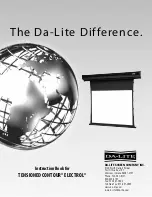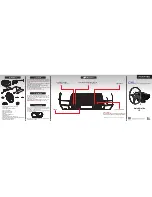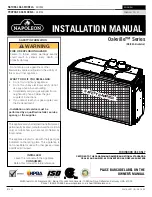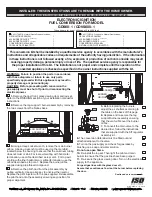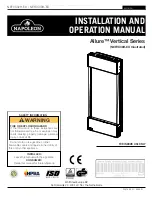
Function Reference
Analog Stereo/Dual Sound
5
5-39
Analog Stereo/Dual Sound
General
The Analog Stereo Sound or Dual Sound is a two-carrier system which is used in
various countries with different sound carrier frequencies. The first sound carrier trans-
mits the mono sound, respectively channel 1 information. The second sound channel is
transmitted using an additional sound carrier.
Depending on different TV systems the two sound carriers are modulated by the follow-
ing audio signals:
Table 5-11. Analog Stereo/Dual Audio Signals, Systems B/G and D/K
TV Systems
Sound Modes
Channel 1 (S1)
Channel 2 (S2)
PAL B/G
and
PAL/SECAM D/K (FM A2)
Mono
Stereo
Dual
Mono
(L + R)/2 = M
Mono
Mono
R (right)
Mono (2nd language)
Germany, Switzerland, and the Netherlands have used the analog Stereo/Dual sound in
the PAL B/G system for many years. According to the transmission standard, the first
sound carrier frequency is 5.5 MHz. The second sound carrier frequency is approxi-
mately 242 kHz above the first sound carrier, 5.742 MHz. The audio signals are FM
modulated on the sound carriers.
To distinguish between Stereo- and Dual-sound transmission, an additional pilot signal
of 54.68 kHz is present on the second sound carrier. This pilot signal is AM modulated
with identification frequencies, 117.5 Hz for Stereo or 274.1 Hz for Dual Sound. The
pilot carrier and the identification frequencies are coupled with the line frequency fH.
The pre-emphasis for both sound carriers is 50 µs. The minimum LF bandwidth is 40 Hz
to 15 kHz.
For frequency spectrum of Analog Stereo Sound B/G, see Appendix D.
Eastern European Countries as Poland, Lituania, and Czech Republic are prepared to
introduce or use the analog Stereo/Dual sound for TV systems PAL/SECAM D/K
(FM A2). The first sound carrier frequency is 6.5 MHz. The second sound carrier
frequency is 6.258 MHz. The audio signals are FM modulated on the sound carriers. The
pilot carrier and identification frequencies are identical to the PAL B/G system.
Summary of Contents for 54200
Page 2: ......
Page 6: ......
Page 14: ......
Page 20: ...54200 Users Manual 1 4...
Page 28: ...54200 Users Manual 1 12...
Page 32: ...54200 Users Manual 1 16...
Page 44: ...54200 Users Manual 1 28...
Page 45: ...2 1 Chapter 2 Main Features Title Page Introduction 2 3 Main Features 2 3...
Page 46: ......
Page 50: ......
Page 142: ...54200 Users Manual 4 76...
Page 153: ...Function Reference TELETEXT 5 5 11 Figure 5 5 Position and Level of Antiope Data Lines...
Page 266: ...54200 Users Manual 6 58...
Page 292: ...54200 Users Manual 8 2...
Page 322: ...54200 Users Manual 8 32...
Page 324: ......
Page 325: ...A 1 Appendix A TV Systems Used in Various Countries...
Page 326: ...54200 Users Manual A 2...
Page 334: ......
Page 335: ...B 1 Appendix B VHF UHF Channel Frequencies for Different TV Systems...
Page 336: ...54200 Users Manual B 2...
Page 345: ...C 1 Appendix C Default Settings for Countries...
Page 346: ...54200 Users Manual C 2...
Page 348: ......
Page 349: ...D 1 Appendix D Spectras of TV Audio Systems...
Page 350: ...54200 Users Manual D 2...
Page 351: ...Spectras of TV Audio Systems Examples D D 3 Examples...
Page 352: ......
Page 353: ...E 1 Appendix E Nomenclature of Color Bar Signals...
Page 354: ...54200 Users Manual E 2...
Page 356: ......
Page 357: ...F 1 Appendix F Menu Trees...
Page 358: ......
Page 359: ...Menu Trees F F 3...
Page 360: ...54200 Users Manual F 4...
Page 361: ...Menu Trees F F 5...
Page 362: ...54200 Users Manual F 6...
Page 363: ...Menu Trees F F 7...
Page 364: ...54200 Users Manual F 8...
Page 365: ...G 1 Appendix G Pattern Popup Menus...
Page 366: ...G 2...
Page 372: ...54200 Users Manual G 8...
Page 378: ...54200 Users Manual 6...
Page 380: ...54200 54100 Users Manual Manual Supplement 1...

































